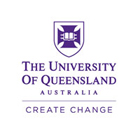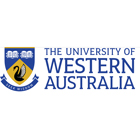Here’s a comprehensive guide for all Indian students who want to study in Australia
38 Top-Ranked Universities | 22,000 Courses | Up to* 6 Years of PSW | High-Paying Jobs – Australia has it all!
We know you have a lot of questions in your mind, so have answered common questions students as you raise about studying and living in Australia.
Australia is a vibe if you’re looking to study abroad. Home to 5 of the world’s top 30 student cities, it's more than just textbooks and lectures—it’s about levelling up in business programs, tech, health sciences, or the arts at some of the coolest campuses globally.
Australia is not about theoretical studies; Australia is all about getting you real-world-ready. From internships to networking with global pros and pioneering research, it’s the place to kickstart your career. Plus, with a buzzing job market and solid support for Indian students, you're setting yourself up for major success. Ready to boost your future? Australia’s got you.
Plus, here are the benefits of studying in Australia:
World-Class Cities for Students: According to the QS Best Student Cities 2025, Australian cities like Melbourne, Sydney, Brisbane, Canberra, and Adelaide are ranked among the top 30 globally for their blend of student mix, desirability, employer activity, and more.
Top-Ranked Universities: Numerous Australian universities are regularly featured in global rankings. For instance, institutions like the University of Melbourne, Australian National University, University of Sydney, University of Queensland, and UNSW Sydney are recognised in the QS World University Rankings 2025 for their academic reputation and high standards of research.
Employment Opportunities: Australia provides up to 6 years of post-study work rights for Indian students, which is a big draw.
Quality of Life: Australia is known for its high standard of living, beautiful landscapes, and vibrant cities, making it an attractive destination for students from India looking for a balance between study and lifestyle.
International Student Support: Australian universities offer a range of services to help students adjust to life in Australia and succeed academically, from orientation programs to legal services and career advice
New update for Australia
Australia Commits to Maintaining High Education Standards for Indian Students in 2025
The Australian Government recently introduced Ministerial Direction 111 (MD 111) to process offshore student visa applications in a more balanced way across education providers. Under MD 111 they have given a capacity limit to universities/providers and students are encouraged to apply for their visas early to be considered under Priority 1.
Cost of studying in Australia
The cost of study in Australia depends on the type of qualification and the university or school you opt for. For instance, veterinary and medical degrees cost substantially more than other degrees. The average tuition fees at one of Australia’s tertiary institutions range between * AUD 20,000 and AUD 30,000 a year.
S.no. | Australia Study Program | Average fees in AUD* |
1. | School | $7,800 to $30,000 annually |
2. | English language studies | $350-450 weekly (varies as per course length) |
3. | Vocational Education and Training (Certificates I to IV, Diploma and Advanced Diploma) | $4000 - $22,000 annually |
4. | Undergraduate Bachelor’s degree | $15,000 - $35,000 annually |
5. | Postgraduate Master’s Degree | $20,000 - $42,000 annually |
6. | Doctoral Degree | $20,000 - $42,000 annually (attractive scholarships up to 100% available with living grants on meeting the university requirements) |
*Please note all figures are indicative, Connect with IDP experts for the latest update on costs.
Most commonly, courses in humanities, arts, and education are a little cheaper, while subjects such as medicine and engineering are likely to be more expensive. If you wish to study at a postgraduate level, the tuition fee is typically higher, and the cost of studying in Australia vary depending on the program
We know you have a lot of questions in your mind, so have answered common questions students as you raise about studying and living in Australia.
Student visa requirements for Australia
As of July 1, 2016, the Subclass 500 student visa has been available, permitting you to stay in Australia for the entire duration of your study program according to your enrollment and completion dates. To ensure a hassle-free experience, make sure your visa remains valid and follow the conditions listed on your student visa. For more detailed information, check out the Australian Government’s Department of Home Affairs website.
Scholarships to study in Australia
Here are some popular scholarship programs you can apply to study in Australia as an Indian student:
# | UNIVERSITY | YEAR | SCHOLARSHIP NAME |
1 | University of South Australia | 2025 | Vice chancellor's International Excellence scholarship |
2 | Deakin University | 2025 | Deakin Vice-Chancellor’s Meritorious 100% Scholarship |
3 | La Trobe University | 2025 | La Trobe High Achiever Scholarship |
4 | Flinders University | 2025 | Excellence Scholarships |
5 | Flinders University | 2025 | Vice-Chancellor International Scholarships |
6 | Flinders University | 2025 | Vice-Chancellor International Scholarships |
7 | Bond University | 2023/24 | UG Excellence (50) |
8 | Bond University | 2023/24 | International Stand Out |
9 | Bond University | 2023/24 | International Stand Out |
10 | Bond University | 2023/24 | UG Excellence (50) |
11 | Bond University | 2023/24 | International Stand Out |
*This is an indicative list, speak with our Australia Education Consultants for more details and get the best available options suited to your profile.
Intakes in Australia
We know you have a lot of questions in your mind, so have answered common questions students as you raise about studying and living in Australia.
Unlike a single intake in Indian universities, Australian colleges and universities offer two major intakes. In some universities, intakes may also be referred to as a semester. The two intakes available in Australia are:
Semester 1: Starts late February/early March to late May/early June
Semester 2: Starts late July/early August through to November
Live life in the FastLane
Want to check if you're eligible to get into your dream university? With IDP Fastlane you can get an in-principle offer in seconds!
Enter your preferences to find and short list matching courses, provide your academic details and get ready to receive a response from your dream university within seconds!
Top courses to study in Australia
Here’s a list of top study abroad courses that international students opt to pursue in Australia for higher education:
Engineering
Business Analytics
MBA (Masters of Business Administration)
Life Sciences
Artificial Intelligence (AI)
Social Sciences
Medicine
Top Universities to study in Australia
When deciding which university to study at, it is crucial that you also look at the world university rankings.
S.No. | Institution | QS Ranking 2025 (Globally) |
1 | The University of Melbourne | 13 |
2 | The University of Sydney | 18 |
3 | The University of New South Wales (UNSW Sydney) | 19 |
4 | Australian National University (ANU) | 30 |
5 | Monash University | 37 |
6 | The University of Queensland | 40 |
Job prospects in Australia
Did you know that you can cut down your cost of living and gain work experience while pursuing your study program in Australia? Thanks to Australian laws, working part-time on a student visa for up to 48 hours every two weeks is permitted.
Cost of living in Australia
Australia consistently ranks among the top nations according to the latest Human Development Index and Quality-of-Life Index. This recognition underscores Australia's strengths in GDP, education, and purchasing power parity. Australians benefit from a high-income level, excellent healthcare, and political stability—factors that contribute to its top-tier living conditions. Feeling inspired to consider Australia?
Category | Weekly Budget (indicative for 2024) |
Groceries and eating out | $150 to $300 |
Gas and electricity | $15 to $25 |
Phone and Internet | $20 to $35 |
Public transport | $35 to $65 |
Car (after purchase) | $160 to $280 |
Entertainment | $85 to $160 |
Employment options:
On-campus
Retail
Hospitality
Tutoring
Office jobs
Freelance
Miscellaneous
Volunteering
We know you have a lot of questions in your mind, so have answered common questions students as you raise about studying and living in Australia.

Secure your future with an education loan
Our student loan partners offer flexible financing options to help support your goals. Take charge of your future today.

Explore health cover options
IDP has partnered with leading health insurance providers to give you the best options for your peace of mind abroad.









